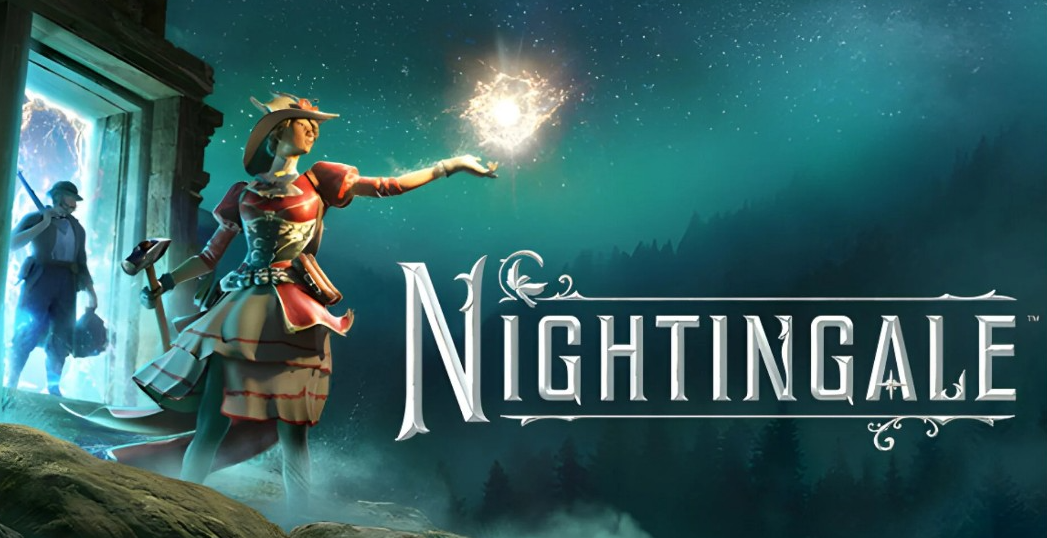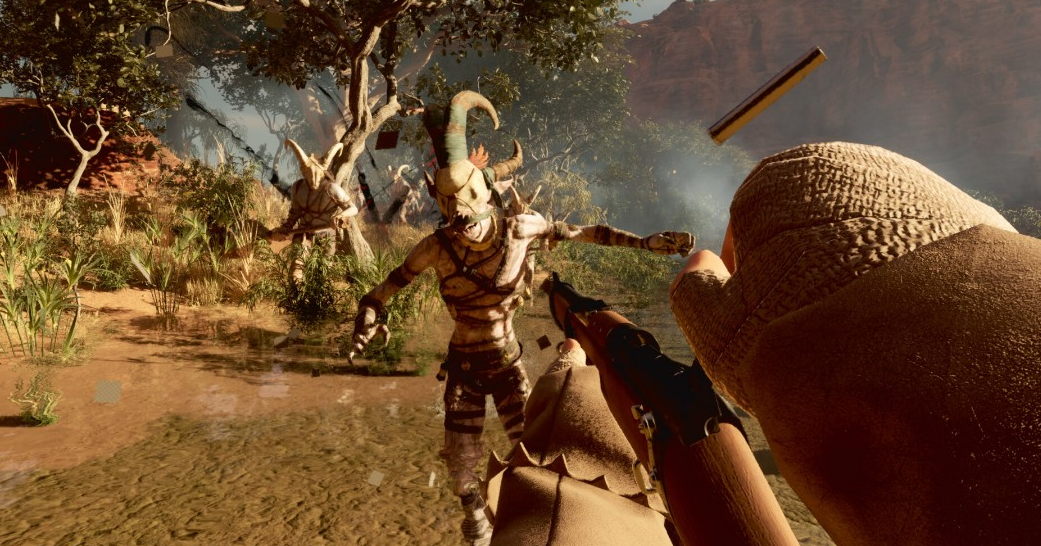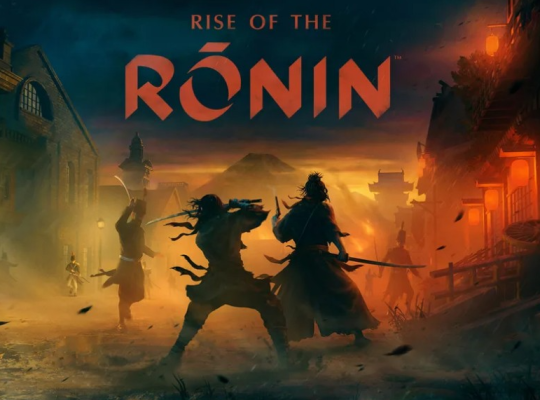Nightingale: A Tale of Realms and Resilience
In the alternate reality of Nightingale, a harmonious coexistence between humans and mystical beings known as the ‘Fae’ has flourished for centuries. United by the shared knowledge of magic, humans have harnessed this mystical power to construct the enchanting city of Nightingale, a hub of magical prowess with portals acting as gateways to various realms.
The tranquility is shattered by a catastrophic event known as The Pale, casting its ominous shadow across the realms connected by Nightingale’s portals. This calamity forces the inhabitants into disarray, scattering survivors far and wide among different dimensions. Now faced with the daunting challenge of overcoming The Pale’s devastating effects, these displaced individuals harbor a collective belief that their only sanctuary lies within the magical confines of Nightingale.

As the survivors navigate the diverse and perilous realms, each step becomes a journey of resilience and determination. The once-scattered community strives to reunite, guided by the unwavering hope that Nightingale stands as a beacon of safety against the encroaching darkness of The Pale.
Within the magical city’s walls, the portals serve not only as pathways but as symbols of resilience and the unyielding human spirit. Nightingale becomes more than a mere city; it transforms into a symbol of refuge, a testament to the enduring connection between humanity and the mystical forces that bind them together.
In the face of The Pale’s ominous threat, Nightingale emerges as a focal point for the survivors, a destination promising safety, unity, and the potential to withstand the calamity that has befallen their once-harmonious realms. The tale of Nightingale unfolds as a narrative of realms in turmoil, weaving together the threads of magic, survival, and the indomitable human spirit against the backdrop of a city that holds the promise of salvation.
Nightingale Gameplay: A Journey of Challenges and Constructive Criticism
Embarking on the Nightingale adventure begins with the creation of your character. Initially, the absence of the ability to replicate one’s visage, a sort of Adonis-like perfection, may stir a twinge of frustration. However, embracing the journey ahead, the decision is made to let go of this desire for perfection. As the character creation process concludes, the game’s tutorial unfolds, offering a glimpse into the immersive world of Nightingale.
Before delving into my experience, it’s imperative to acknowledge that Nightingale is in its early access phase, inevitably accompanied by a share of challenges. Rather than perceiving critiques as disdain, it’s important to view them as positive, constructive feedback to contribute to the game’s refinement.
Amidst the tutorial, set against the backdrop of a desert biome, a notable challenge arises – the collection of Plant Fibers. While this specific hurdle proves vexing in the arid expanse, it appears to be an isolated issue, suggesting that biome-specific challenges may be part of Nightingale’s diverse gameplay.
Upon completing the tutorial, the player is presented with the pivotal decision of choosing a “Safe” biome to establish their base. Opting for the Forest biome, with its abundance of easily accessible resources, serves as a strategic choice, steering clear of the prior desert hardships.
With the base established, the subsequent objective is to enhance both personal gear and the base itself. However, the journey to gather resources unveils a tedious task, particularly at the game’s outset when carrying capacity is limited. The inherent difficulty eases as the player advances and crafts a superior backpack, underscoring the importance of early prioritizing this upgrade.
A notable challenge arises in the absence of an option to utilize materials stored in containers. Crafting necessitates having materials in the backpack, posing an organizational hurdle that becomes increasingly pronounced as the game progresses. Balancing realism and gameplay enjoyment, this aspect may be a source of frustration for players. However, it’s optimistic to anticipate that the development team is actively addressing this concern for a more seamless and enjoyable gameplay experience.
In essence, Nightingale’s gameplay is a journey marked by challenges and opportunities for improvement. The game’s early access phase invites players to contribute to its evolution through constructive criticism, fostering a collaborative effort between the gaming community and the developers. As Nightingale continues to evolve, there’s a sense of anticipation for the refinement of its mechanics, addressing player concerns, and ultimately realizing the full potential of this enchanting survival adventure.
Nightingale Graphics: A Glimpse into Mesmerizing Realms
Nightingale unfolds across diverse maps, each adorned with captivating biomes that showcase the game’s aesthetic prowess. The visual spectacle is such that certain landscapes when paired with serene music, evoke a sense of awe. While navigation becomes slightly challenging in the dark, a characteristic inherent in many survival games, Nightingale’s visuals earn commendation, scoring high for their beauty. However, the interaction with in-game elements demands refinement, indicating a need for polishing in this aspect.
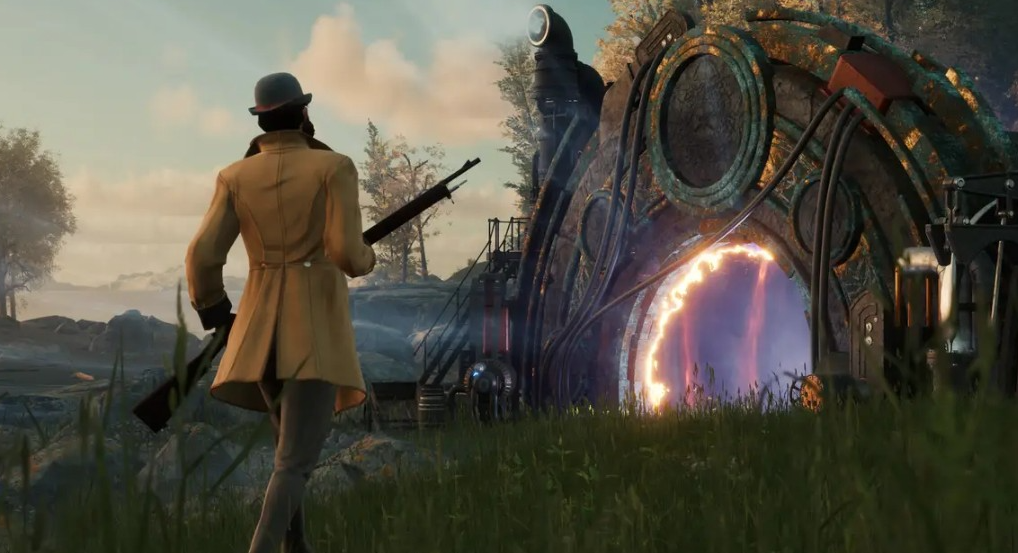
Despite encountering a few bugs scattered throughout the gameplay, none were significant enough to deter the overall enjoyment of Nightingale. The allure of exploration, delving into every nook and cranny of the expansive map, remains a compelling aspect of the experience. As the game progresses beyond the initial stages, the promise of heightened enjoyment becomes evident, with more dynamic events unfolding and resource acquisition accelerating.
Attempting to pass a final verdict on Nightingale’s current state proves challenging, given its early access status. The game hovers between potential greatness and areas requiring improvement. Acknowledging its early development stage, Nightingale refrains from being labeled definitively as good or bad. The early access phase is a testament to the game’s potential, providing a glimpse into what it could become with further refinement.
Crucially, the game’s trajectory toward success hinges on the developers’ engagement with the community and their commitment to addressing feedback. Nightingale’s current standing is a delicate balance, acknowledging both its merits and the areas that warrant attention. Those seeking a polished, finished product might find solace in adding the game to their wishlist and patiently awaiting further developments. Alternatively, if an immersive gaming experience with evolving mechanics is appealing, Nightingale offers a unique journey into an enchanting world. For those intrigued by similar mechanics, exploring Palworld may also provide an interesting alternative (link to my full Palworld review here).
Nightingale Combat: Delayed Gratification for Weapon Enthusiasts
Nightingale’s promotional trailers teased an arsenal of enticing guns and magical weapons adorned with visually stunning effects, fueling excitement for a combat experience reminiscent of Bioshock or Witchfire. However, the reality of my gameplay experience fell far short of these expectations. Despite investing several hours into the game, the coveted guns and magical weapons remained elusive. Instead, my means of defense were limited to rudimentary tools designed for hunting, mining, and tree-cutting.
The anticipated combat, brimming with dynamic firepower, devolved into melee-centric gameplay akin to Minecraft, where the primary interaction with enemies involved blunt force from melee weapons. While the prospect of more elaborate combat mechanics may be lurking deeper in the game, the delay in reaching this point proves a significant hurdle, leaving players longing for the exhilarating combat showcased in Nightingale’s initial trailers.
Nightingale’s Monotonous Landmarks: A Struggle for Interest
In the initial exploration of Nightingale’s diverse realms, a captivating blend of beauty and intimidation adorned the landscapes, sparking a sense of curiosity within me. The structures and landmarks scattered across these realms held the promise of intriguing discoveries. However, the allure quickly faded as I delved deeper into these landmarks, only to realize that they either lacked purpose or were indistinguishably repetitive. Towers, caves, and puzzles manifested in a monotonous pattern, each one mirroring the last.
The initial excitement of exploration gradually gave way to boredom as the once-promising landmarks proved to be mere replicas of one another. The redundancy in design and purpose became evident, dampening the enthusiasm to venture further into these seemingly identical structures. The realization that these landmarks held little value for exploration became a discouraging factor, prompting a decline in interest. In Nightingale, the struggle to maintain curiosity amid monotonous landmarks becomes a noteworthy aspect, demanding attention for the game to evolve beyond its current repetitive landscape.
Nightingale’s Aesthetic Allure: A Visual Odyssey
Nightingale enchants with its visually captivating realms, be it the mystical forests or the unforgiving deserts. The landscapes are adorned with peculiar elements that beckon exploration, drawing players into a world rich in visual intrigue. However, the initial allure fades as the realization sets in that these elements, though strange and interesting, are essentially uniform across the map. Puzzles and dungeons, once discovered, become repetitive, diluting the sense of novelty.
Amidst this monotony, unique landmarks are beacons of interest, offering a break from the visual uniformity. Nightingale’s potential for greatness lies in the diversification of these unique places and the introduction of varied puzzles and dungeons. A game that not only looks appealing but also delivers a rewarding gameplay experience hinges on the developers’ ability to infuse diversity into these aspects. Regrettably, this aspiration remains unrealized at the game’s launch, leaving players yearning for a more nuanced and engaging visual journey in the realms of Nightingale.
Nightingale’s User-Friendly Building: Crafting Dreams with Ease
In the realm of Nightingale, one aspect that shines in user-friendliness is the building mechanics. A notable feature allows players to intricately plan their structures before investing any resources. This thoughtful touch enables users to map out their creations, assessing the aesthetic and functional aspects, all without the commitment of actual resources. The ability to visualize and refine building designs before construction prevents the frustration of investing materials into a structure only to dismantle it later due to unforeseen issues.
Nightingale’s approach to building mechanics stands as a commendable facet, offering players the freedom to experiment and perfect their creations. This user-friendly approach not only enhances the gaming experience but also aligns with the creative spirit of players, ensuring that constructing within the mystical realms of Nightingale is a seamless and enjoyable endeavor.
Nightingale’s Lack of Direction: Navigating the Unknown
Navigating the realms of Nightingale proves to be a challenging task, as the game provides minimal guidance on how to execute tasks or locate essential elements. While the game offers a sense of what needs to be done and what to search for, the absence of explicit instructions or directional cues leaves players grappling with uncertainty. In this mystical world, there is a notable absence of hand-holding, a characteristic that some players may admire for its immersive challenge, but many would yearn for a more informative and user-friendly experience.
The absence of clear directives creates an environment where getting lost and losing one’s sense of direction becomes a prevalent issue. This lack of guidance, while possibly appealing to seasoned survival crafting enthusiasts, renders Nightingale a daunting choice for those unfamiliar with the genre. A more nuanced balance between providing autonomy and offering helpful direction could transform Nightingale into an inclusive experience that caters to both seasoned players and newcomers alike.
Nightingale: A Literary Journey Through Gaslamp Fantasy
In the realm of gaming, Nightingale emerges as a captivating “gaslamp fantasy” experience, as envisioned by Flynn. Set in an alternate history version of 1880s London, the game unfolds in a world where fictional characters, such as Allan Quatermain from King Solomon’s Mines, coexist with humanity. The course of human development takes an unexpected turn with the intervention of a magical race known as the Fae. Harnessing this magic, humanity creates an expansive network of portals, culminating in the central city of Nightingale.
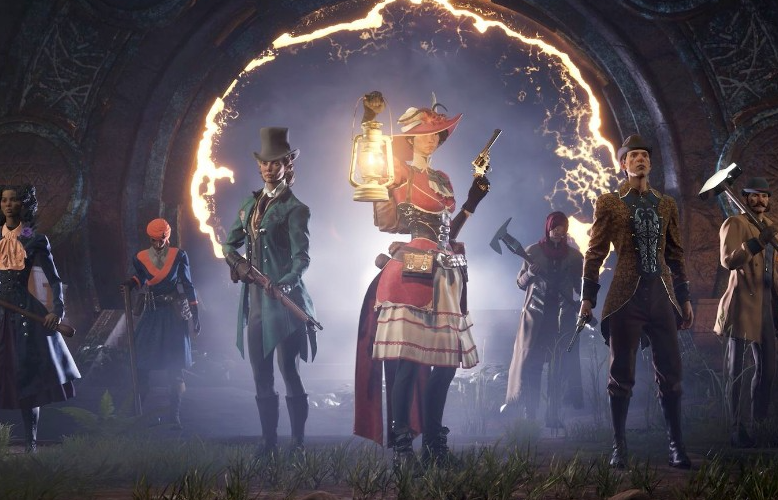
The narrative takes a dramatic turn in 1889 with the cataclysmic event known as The Pale, which engulfs the portal network. People attempt to seek refuge in Nightingale, but the collapse of the portals strands players in a dark and foreboding realm. Guided by a mysterious Fae reminiscent of Puck from A Midsummer Night’s Dream, players assume the role of a Realmwalker, bestowed with the ability to activate portals and traverse between realms. Nightingale weaves a tale rich in literary and historical connections, offering a narrative depth that appeals to well-read adults.
Following an hour of tutorials, players delve into a survival crafting experience, encountering the genre’s expected basics. Resource gathering becomes paramount, with rocks, plant fiber, and wood forming the foundation for basic shelters and tools. This initiates a gameplay loop of progression, where building evolves from rudimentary structures to advanced tools and weapons. Nightingale introduces intricate survival systems, requiring players to address fundamental needs such as eating, sleeping, and healing injuries. The game adds complexity with environmental factors, including debuffs from rain-soaked ventures or exposure to the scorching desert sun.
Beyond the survival mechanics lies Nightingale’s unique charm—the richness of its lore. The game’s literary and historical ties create an engaging backdrop, promising a distinctive experience for those drawn to the intricacies of gaslamp fantasy. While the narrative exhibits potential, it remains to be seen how Inflexion navigates potential colonialist undertones. As players progress, the later-game aspects of building, gear, and exploration promise to unveil additional layers of depth, transforming Nightingale into a comprehensive and immersive gaming odyssey.
Nightingale: Navigating the Crossroads of Magic and Challenge
In the alternate world of Nightingale, where the Victorian era collides with the enchantment of magic, a symbiotic relationship between humans and faes flourishes. However, humanity’s unchecked greed triggers a cataclysm, plunging the realms into chaos. Amidst this turmoil, the chosen few, known as Realmwalkers, wield the ability to traverse the diverse fae realms. Players assume the role of one such Realmwalker, driven by the quest to reach the mystical refuge of Nightingale, a city where fortunate humans have sought sanctuary.
The initial reception, reflected in the first thousand Steam reviews, paints a picture of Nightingale as a game brimming with potential yet grappling with notable challenges. Key concerns revolve around the mandatory online connection, the yearning for a more immersive single-player experience, and varied responses to the intricacies of survival crafting mechanics. These critical areas demand the developers’ attention, as they navigate the delicate balance of refining and enhancing the gaming experience.
The Nightingale community’s collective hope and anticipation speak volumes about the willingness to embark on this evolving journey alongside the developers. As Nightingale traverses the path of development, the real-time feedback from players becomes a compass guiding its growth. The challenges laid bare in these initial reviews present opportunities for the game to carve a distinctive niche within the competitive survival crafting genre.
The evolving narrative of Nightingale unfolds not just within its alternate reality but also within the feedback loop of its dedicated community. The developers face the formidable task of addressing concerns and implementing improvements, steering Nightingale toward a future where it either soars to new heights or faces the risk of faltering. The discerning eyes of Steam’s vigilant community remain fixed on Nightingale, ready to contribute their thoughts and insights at every pivotal juncture of this transformative journey.







